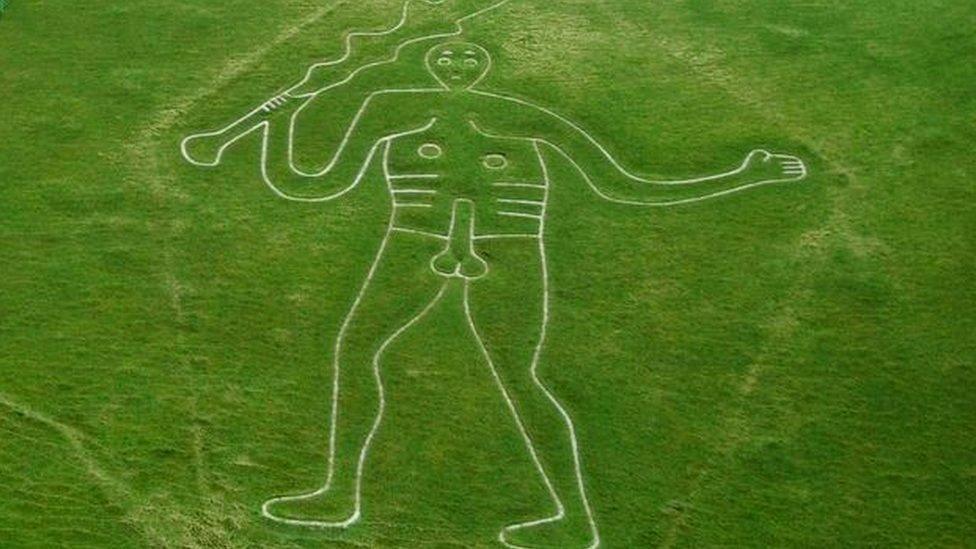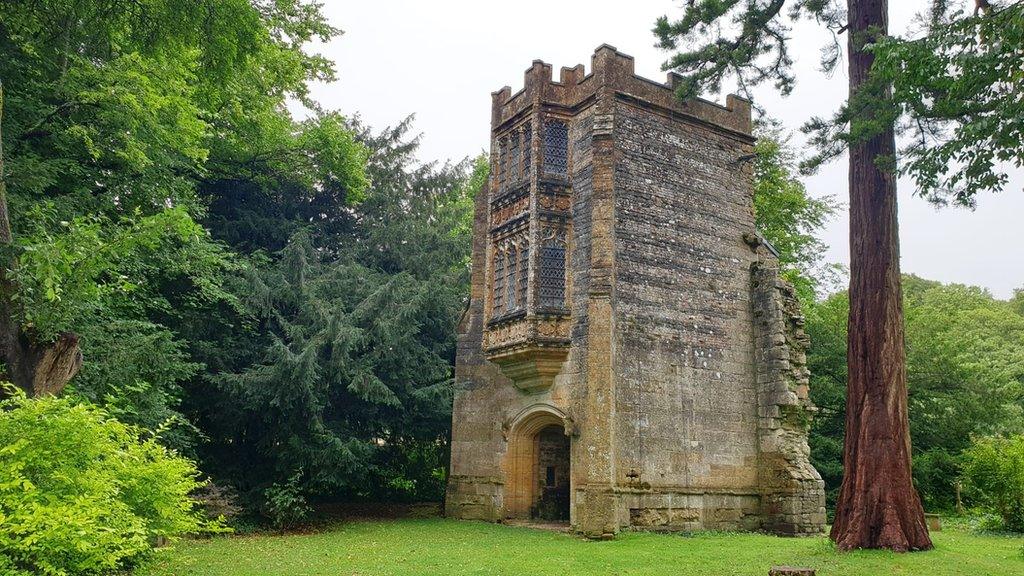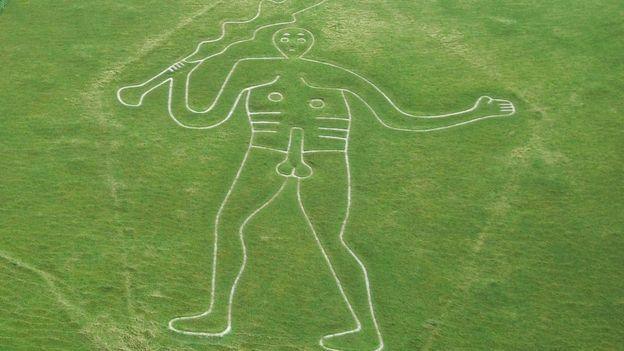Cerne Abbas Giant: Has the mystery of the chalk hill figure been solved?
- Published

Speculation has surrounded the giant for centuries
A centuries-old mystery surrounding the origins of a chalk giant hill figure has been unravelled by academics from Oxford University.
New research indicates the Cerne Abbas Giant in Dorset was originally carved as an image of Hercules to mark a muster station for West Saxon armies.
Speculation has long surrounded the figure, with some believing it could date back to prehistoric times.
The academics said it was reinterpreted in the 11th Century by local monks.

Cerne Abbey was founded at the end of the 10th Century
In 2021, tests carried out for the National Trust, which owns the site, revealed the giant had been carved in the Anglo-Saxon period and was not prehistoric, or more recent, as previously thought.
Dr Helen Gittos and Dr Thomas Morcom have been building on the discovery to uncover why the giant was created in the first place.
They explained that Hercules was well known in the Middle Ages and there was a particular spike of interest in him during the 9th Century, at a time when the area was under attack by Vikings.

Dr Helen Gittos said the land was owned by the West Saxon royal family
The location of the giant - jutting out from a ridge and close to major routeways - along with its access to fresh water and the supplies of the local estate, would have made it an ideal meeting point for West Saxon armies fighting against the invaders.
Dr Helen Gittos, associate professor in early medieval history, said: "This land was owned by the West Saxon royal family in the 9th Century and the 10th Century and we have descriptions of that land.
"They describe that there was a herepath - an army road - that led on to Giant Hill and this hillside looks like a special kind of meeting place that we now recognise in the Anglo Saxon landscape."

A medieval manuscript refers to Eadwold planting his staff into the ground
The giant is also alluded to in an 11th-Century manuscript held at the British Library that refers to a local hermit, Saint Eadwold, planting his staff at the top of the hill.
It is now believed the monks at Cerne Abbey had attempted to rebrand the naked giant as Eadwold in a bid to lay claim to the saint's relics.
Dr Morcom, postdoctoral fellow at the University of Oslo, said: "Having a large, very obviously naked, pagan figure on your doorstep was an inconvenient fact for the monks and they engaged in a piece of intellectual interpretation, associating him with their patron saint, Eadwold."

Dr Morcom said the naked, pagan figure was "inconvenient" for Cerne's monks
Dr Gittos added: "What's wonderful is that the story we have found is so much more interesting than it being a mystery.
"It tells us so much more about this place and these people and that, for me, is really exciting."
The findings, by Dr Gittos and Dr Morcom, were due to be published in Speculum the journal of the Medieval Academy of America.

Follow BBC South on Facebook, external, X, external, or Instagram, external. Send your story ideas to south.newsonline@bbc.co.uk, external.
Related topics
- Published30 July 2023

- Published12 May 2021

- Published8 July 2020

- Published23 March 2020
